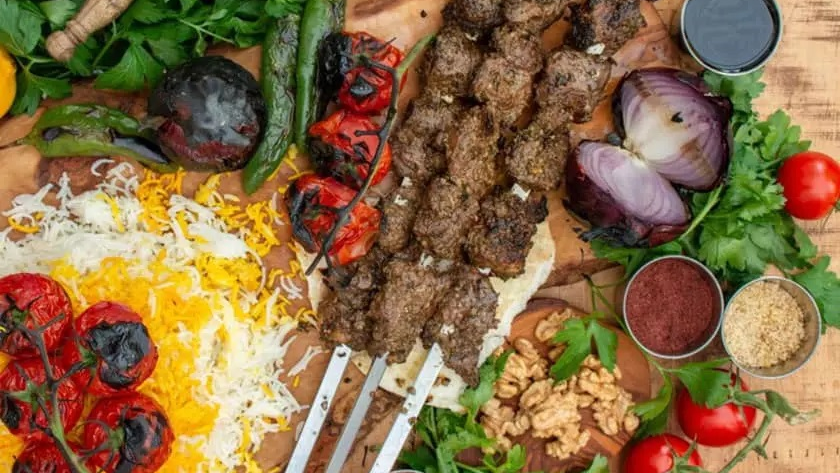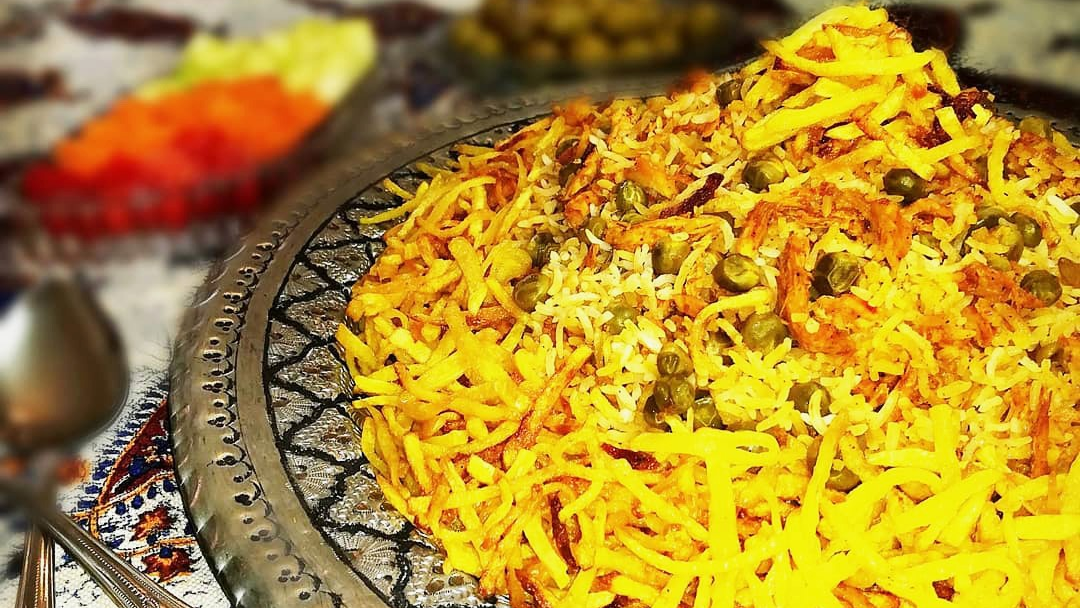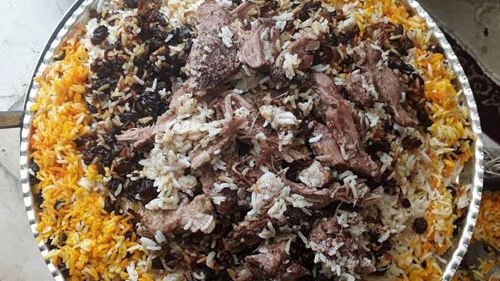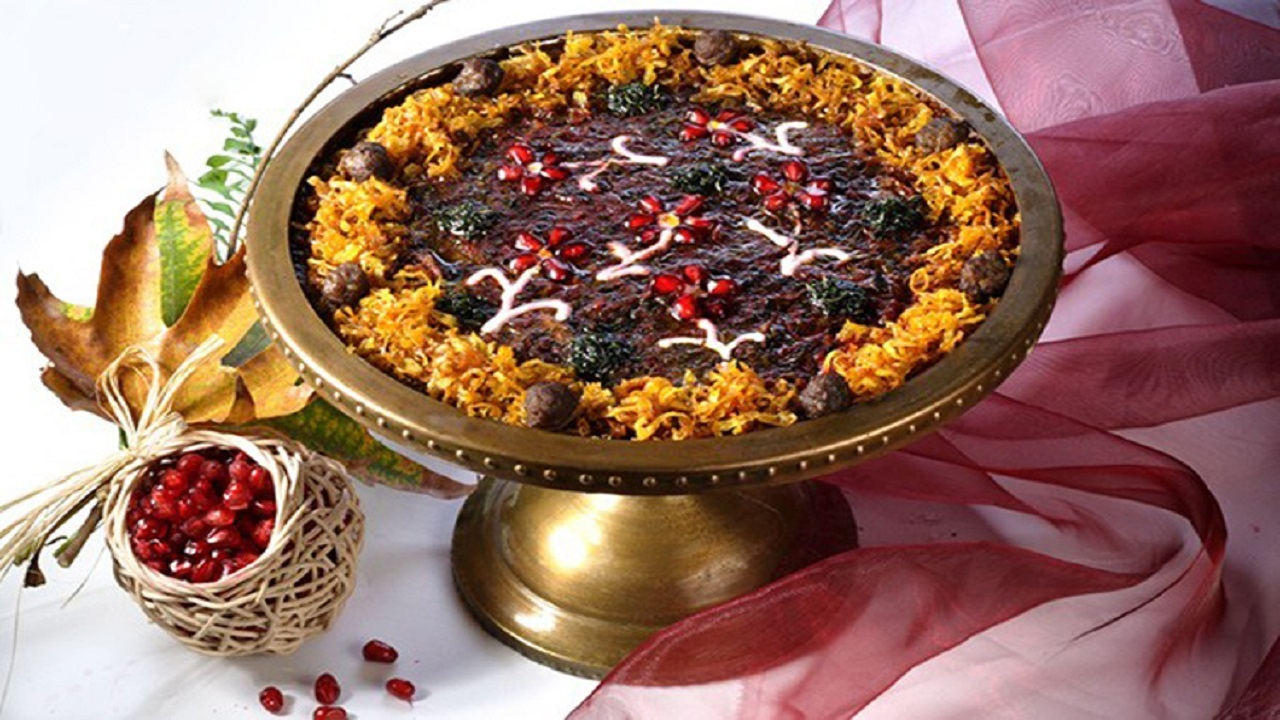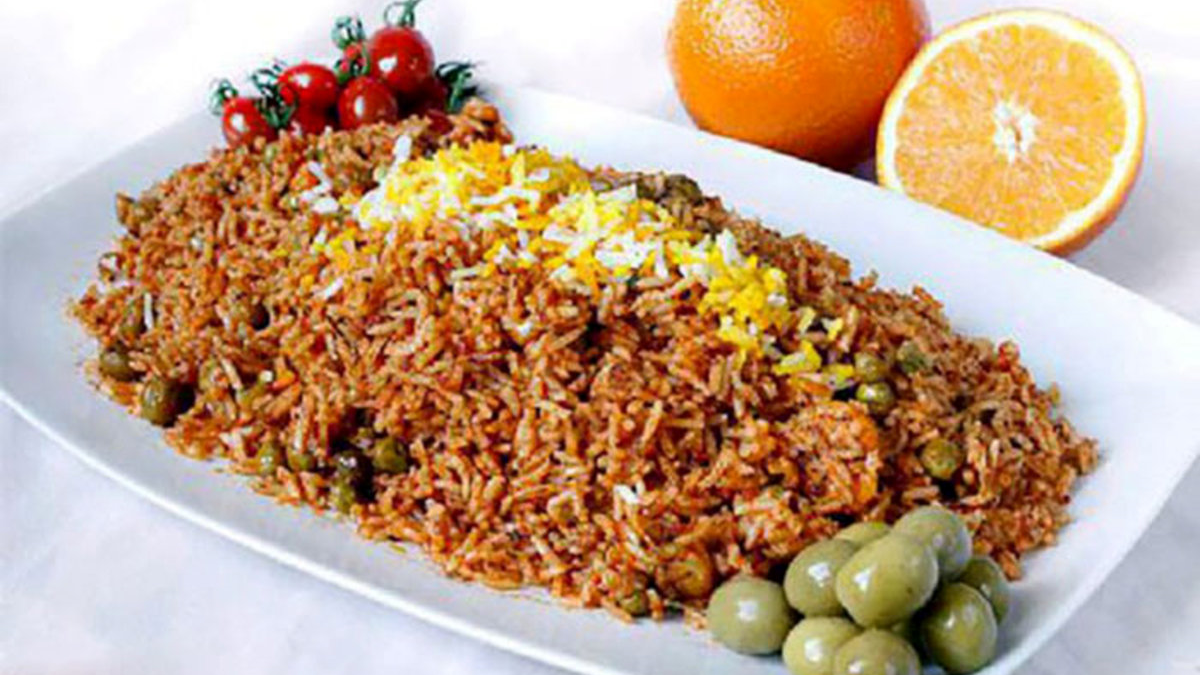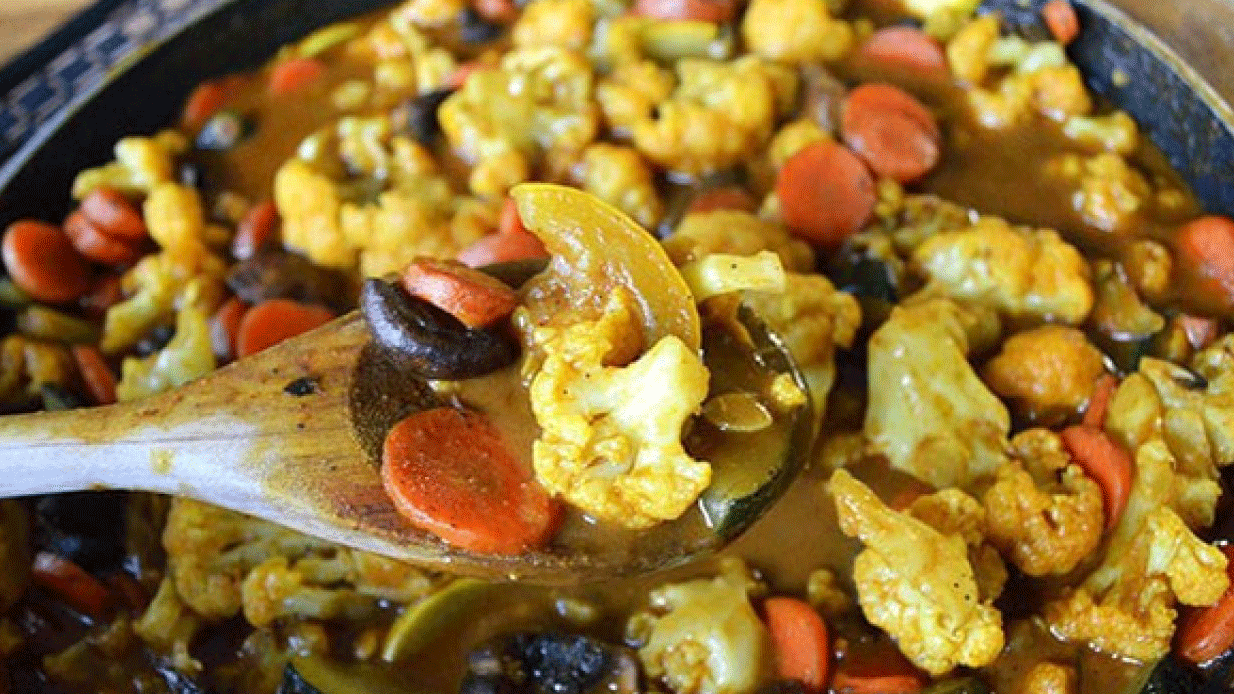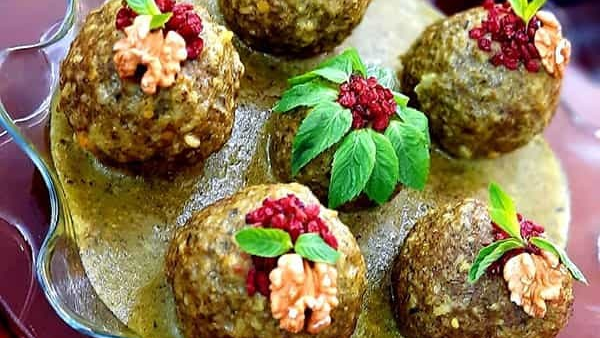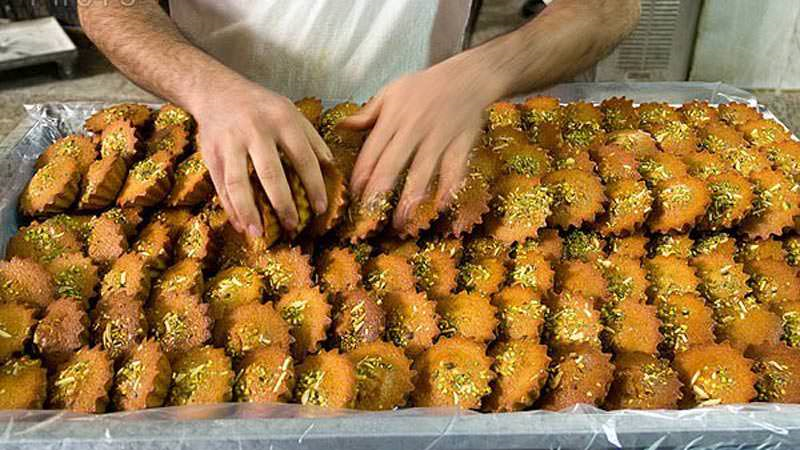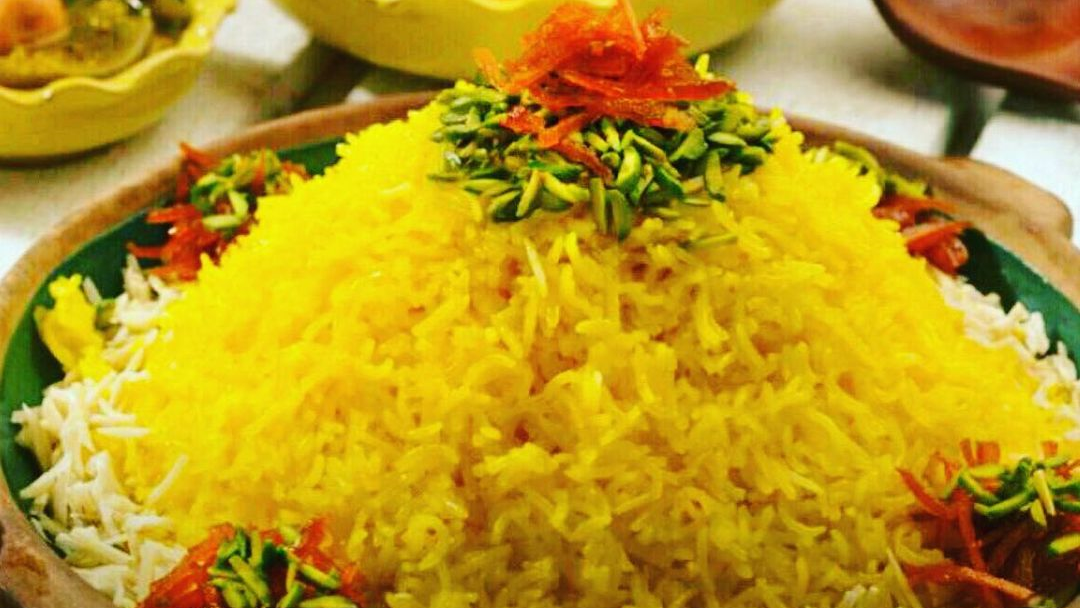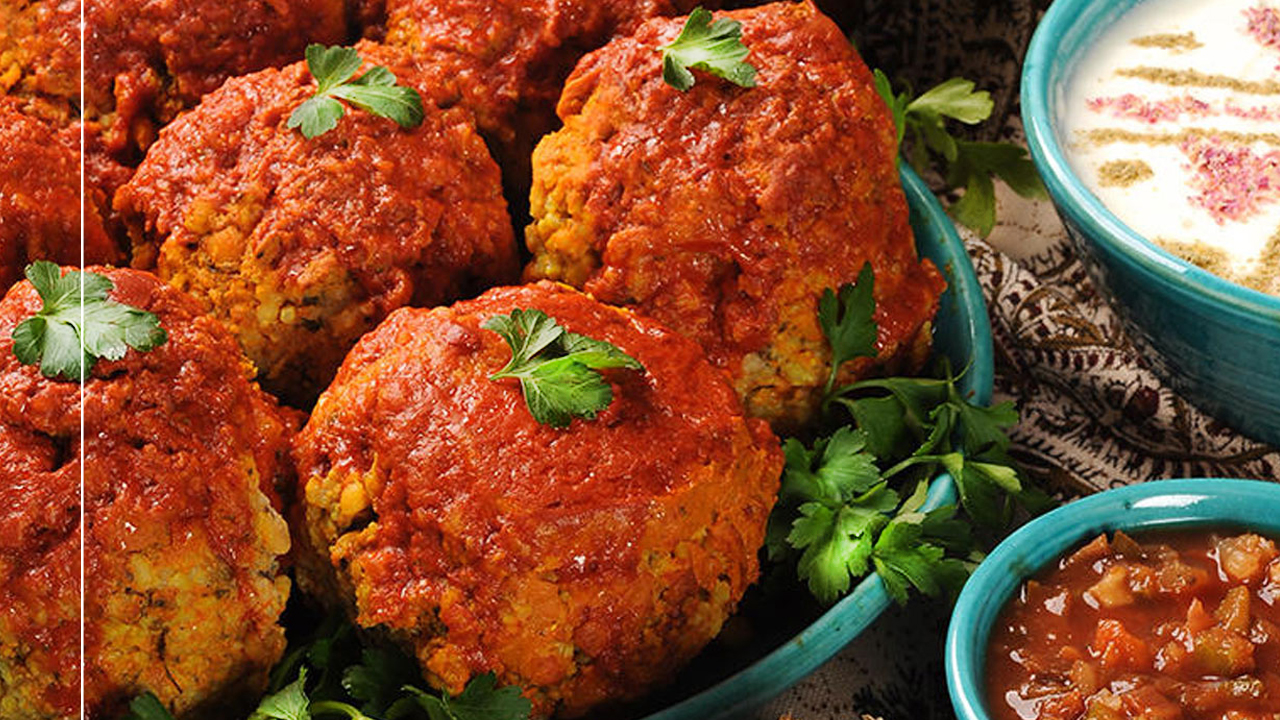
A visit to Iran isn’t complete without tasting Āsh-e Reshteh!
A visit to Iran isn’t complete without tasting Āsh-e Reshteh!
Iranians have a remarkable variety of āsh (traditional thick soups), many of which cannot be found anywhere else in the world. Iranian āsh dishes are made from natural, organic ingredients, and their wide range of flavors and types is so vast that anyone — regardless of taste or dietary preference — can find several to their liking! The diversity of Iranian āsh is so great, and the preparation of some is so intricate and skillful, that master cooks in Iran are called “Āshpaz” — literally meaning “one who cooks āsh well”! Among all these traditional Iranian āsh, if we were to name the most famous and widespread, Āsh-e Reshteh (noodle soup) would undoubtedly be at the top of the list. Āsh-e Reshteh is so beloved in Iran that it is prepared for many occasions and has become part of the people’s customs and rituals. Wherever you travel across Iran, you’ll easily find this dish — so be sure to include tasting Āsh-e Reshteh in your travel plans!
Ingredients for Cooking Āsh-e Reshteh (Persian Noodle Soup):
- Onions: 3 to 4, finely sliced
- Herbs for Āsh (mixed greens): 3 cups (typically a mix of parsley, cilantro, spinach, dill, and leek)
- Chickpeas, red beans, and lentils: ½ cup each
- Āsh noodles (Reshteh): 300 grams
- Garlic: 6 cloves
- Kashk (fermented whey): 1 cup
- Dried mint: ½ cup
- Salt and turmeric: as needed
The presence of garlic in Āsh-e Reshteh gives it a unique and delightful flavor. However, if you’re sensitive to its taste or aroma, you can simply leave it out.
The night before cooking the āsh, soak the legumes (beans, chickpeas, lentils) separately in water and change the water at least once.
The āsh herbs are a combination of parsley, cilantro, dill, and spinach (or beet greens), mixed in equal proportions. Chop the herbs finely enough that the individual greens are no longer distinguishable from one another.
Persian Noodle Soup Recipe
Cooking Āsh-e Reshteh requires care and precision — but if this is your first time making it, don’t worry! By following the steps below with patience and attention, you’ll achieve a delicious result. First, drain the soaked legumes and cook them in water until they are completely tender. This step may take about 45 minutes. Next, pour five cups of water into a large pot and bring it to a boil. Add the chopped herbs to the boiling water, then reduce the heat so it simmers gently. This allows the herbs to cook slowly and release their aroma and flavor. You’ll need at least 30 minutes for this stage. Be careful not to cover the pot, as doing so can cause the herbs to lose their bright green color and turn brownish. Āsh-e Reshteh looks and tastes much better when the herbs retain their natural green hue.
While the herbs are cooking, prepare the fried onions (piaz dagh) — one of the most essential elements in Iranian cuisine. Its importance is even greater in Āsh-e Reshteh, as it’s used both as an ingredient and as a garnish. Finely slice the onions and fry them in oil until they turn golden. Set aside half of them for decoration. Add a little turmeric to the remaining onions, stir briefly, and then set them aside as well. Fry the garlic in the same way until golden. As for the dried mint, it requires only a few seconds of frying — once the oil is hot, add the mint and immediately remove it from the heat to prevent burning. Now, add half of the fried mint, along with the fried onions, fried garlic, and the cooked legumes, to the pot of simmering herbs. Stir the mixture gently, then cover the pot and let it cook for about 15 minutes, allowing the flavors to blend beautifully.
Next, divide the noodles (reshteh) into three equal portions and gradually add them to the pot. Lower the heat and let the soup simmer for about 20 minutes. Cook until the noodles are fully tender. While adding the noodles, make sure to stir continuously so that the āsh doesn’t stick to the bottom of the pot. Add salt at the very end, since the noodles themselves are somewhat salty, and you may not need any extra. Once the āsh reaches your desired thickness, it’s ready to serve. If you prefer a thicker consistency, you can dissolve a tablespoon of wheat flour in one cup of cold water and stir it into the pot at this stage. Conversely, if the āsh becomes too thick, simply add a little boiling water to adjust the texture.
How to Serve Āsh-e Reshteh
Pour the āsh into serving bowls and let it cool slightly. Then, garnish the top with fried mint, fried garlic, and fried onions. Serve kashk (fermented whey) on the side so that each person can add it to their bowl according to their own taste and preference. You can also serve a bit of vinegar alongside the āsh, which some people enjoy adding for a pleasantly tangy flavor.
| Name | A visit to Iran isn’t complete without tasting Āsh-e Reshteh! |
| Country | Iran |
| Type | Soup snack and appetizer |
| Registration | No registration |
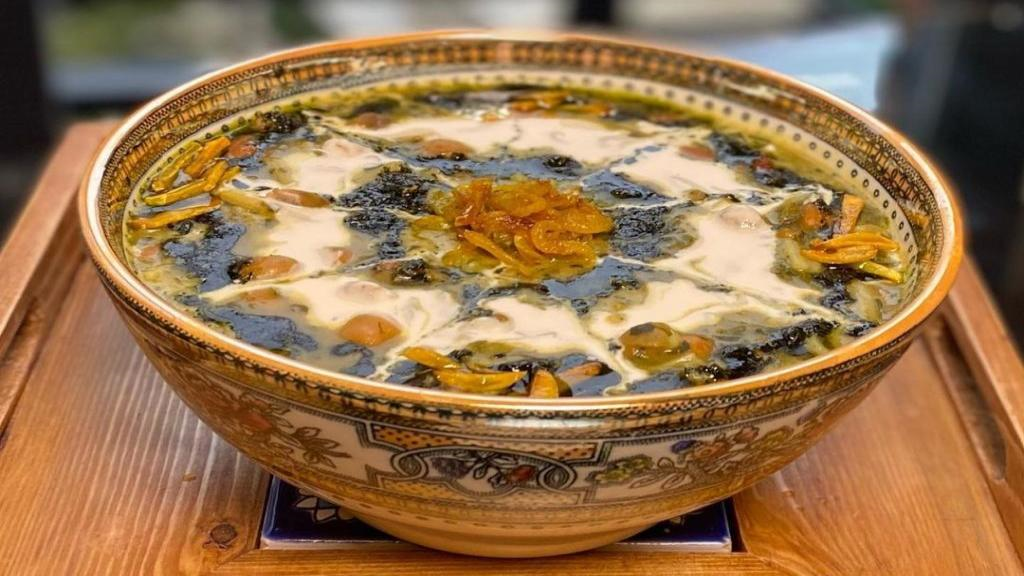
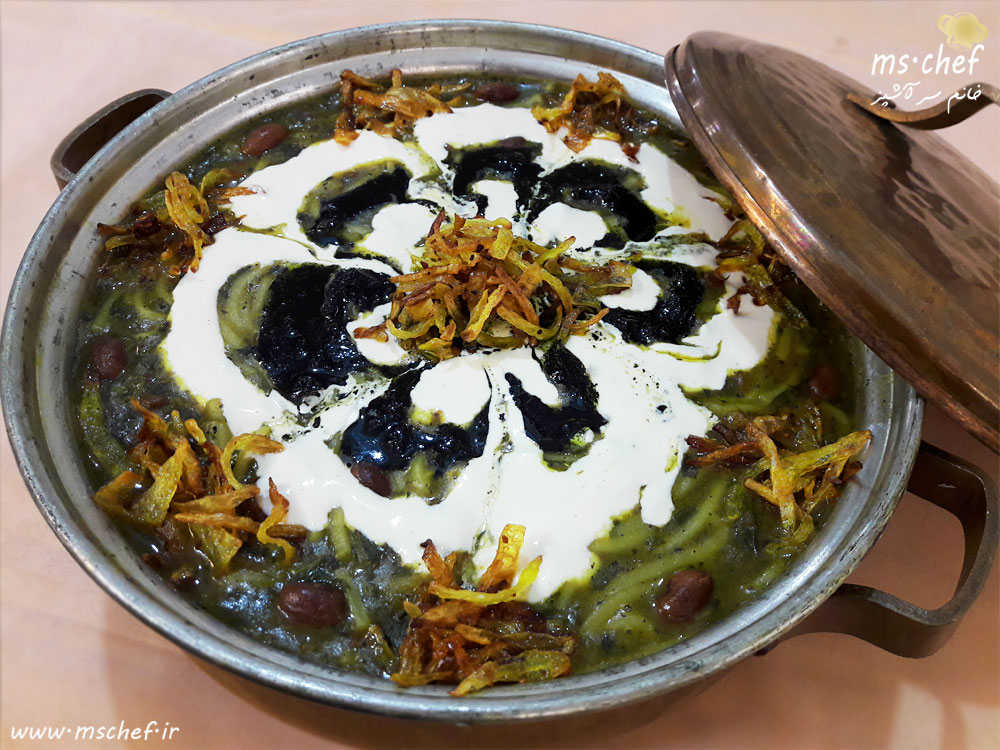


Choose blindless
Red blindless Green blindless Blue blindless Red hard to see Green hard to see Blue hard to see Monochrome Special MonochromeFont size change:
Change word spacing:
Change line height:
Change mouse type:

